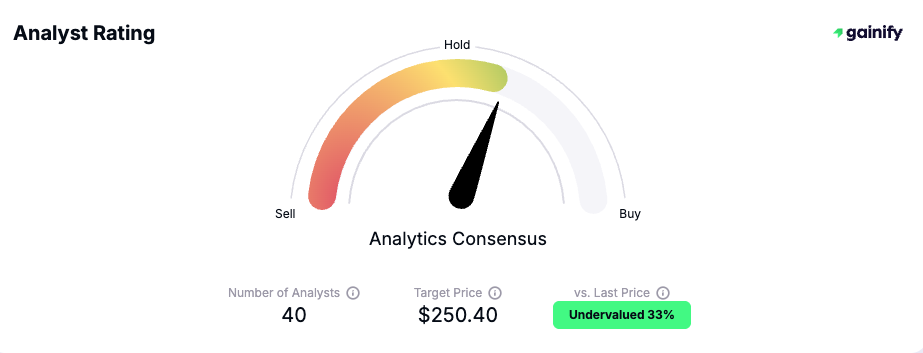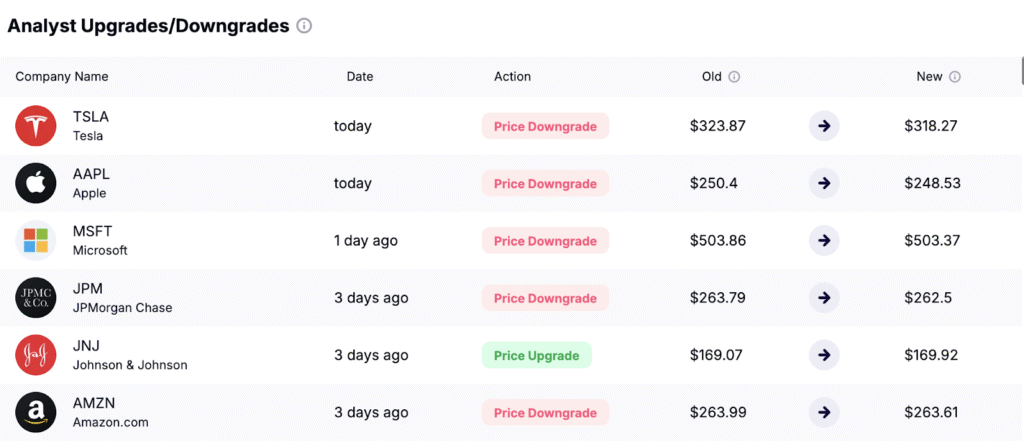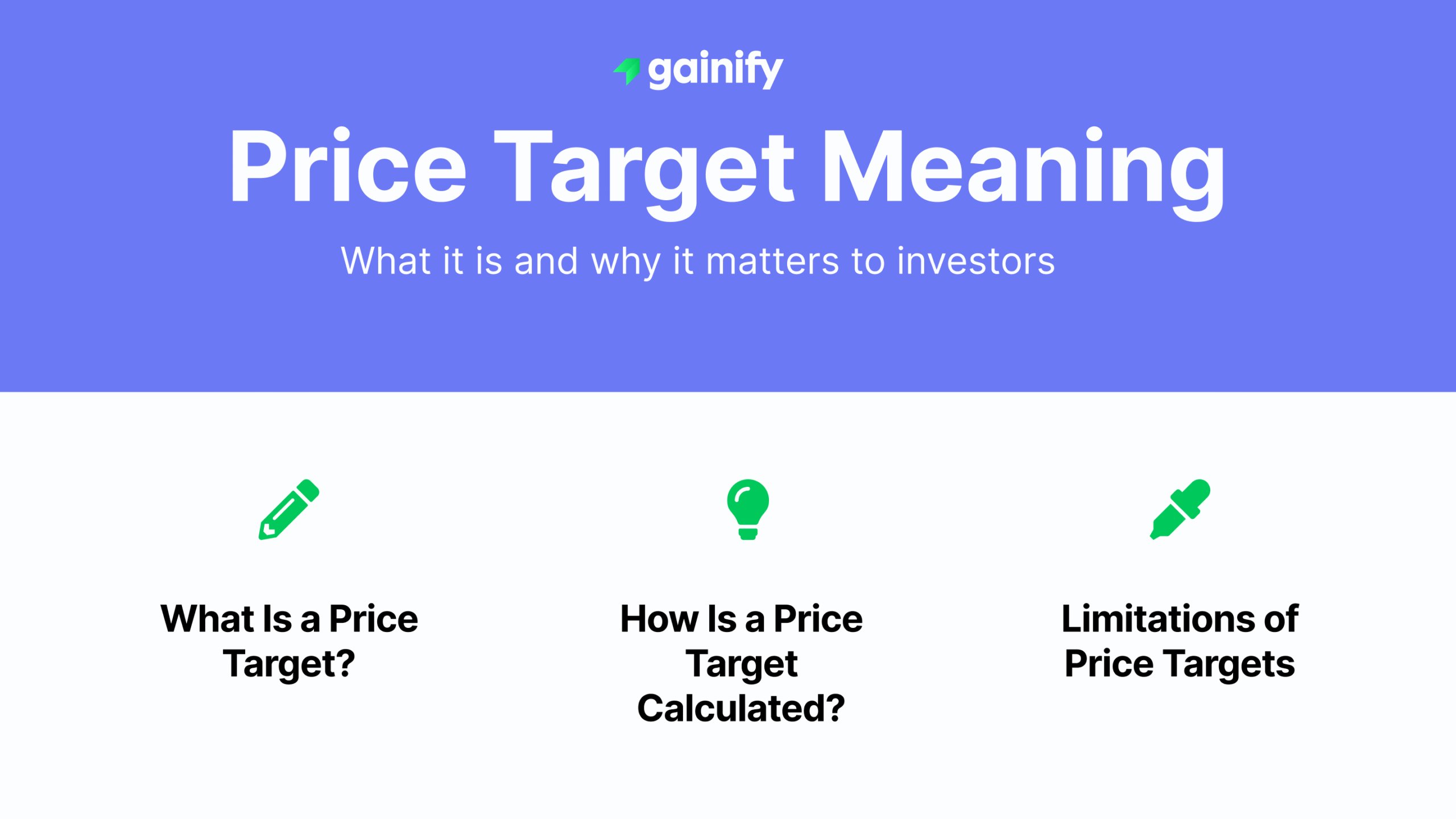A price target is an analyst’s estimate of where a stock’s price is expected to be over a specific period of time, usually the next 12 months. It’s based on a mix of financial modeling, valuation methods, and market outlook. Price targets help investors quickly gauge whether a stock may be undervalued or overvalued compared to its current market price.
For both individual investors and institutional investors like pension funds or mutual funds, price targets are a useful reference point for investment strategy. While they don’t guarantee future performance, they offer a data-backed signal to guide stock research, risk assessment, and investment decisions across changing market conditions.
In this article, we’ll break down how price targets are calculated, what they mean in different market contexts, and how to use them effectively, whether you’re managing your own investment portfolio or analyzing financial markets for long-term strategy.
What Is a Price Target?
A price target is the estimated future market price of an individual stock, typically over a defined period of time such as 12 months. Price targets are issued by equity research analysts from investment banks, mutual funds, hedge funds, and other investment companies. These projections are based on detailed financial analysis, investment objective frameworks, and industry assumptions.
Price targets serve as useful indicators of a stock’s expected performance and are frequently updated based on earnings, macroeconomic developments, and company-specific news. A consensus price target is the average of all published analyst forecasts, offering a helpful benchmark of market sentiment.
Key Points:
- Developed by investment analysts using valuation models and financial forecasts
- Often tied to a one-year time horizon
- Frequently updated based on financial reports and corporate developments
- Reflect a mix of qualitative assessments and quantitative modeling
Example: How to Interpret a Price Target
As of now, Apple Inc. (AAPL) trades at $188.38, while the consensus 12-month price target stands at $250.40. This suggests a potential upside of approximately 33%.
When many analysts arrive at similar price targets, it can signal a strong consensus about a company’s fundamentals and growth prospects. However, when targets vary significantly, it often reflects divergent views on future earnings, risk exposure, or market conditions.

How Is a Price Target Calculated?
Analysts rely on a range of tools and data to determine a price target, including financial statements, revenue projections, industry outlook, asset allocation trends, and macroeconomic indicators. Price targets are informed by models such as:
- Discounted Cash Flow (DCF): Uses projected cash flows and a discount rate to estimate present value
- Comparable Company Analysis: Compares valuation multiples of similar public companies
- Dividend Discount Model (DDM): Values dividend-paying stocks using expected dividend streams
- Sum-of-the-Parts (SOTP): Breaks down a diversified company into components and values each separately
Analysts begin with projecting future growth rates for revenue and earnings, which are based on company guidance, market performance, and current financial reports. From there, they model expected capital expenditures, changes in accounts receivable, and other operational costs that may impact cash flow. These inputs form the basis of valuation models. Analysts then layer in macroeconomic variables such as interest rate trends, central bank policy, market risks, and credit conditions. Throughout the process, assumptions are refined based on updated commentary from the management team, financial health indicators, and performance in the current period. This step-by-step approach ensures the price target reflects both company-specific fundamentals and broader financial markets.
Why Price Targets Matter to Investors
Price targets are critical tools for evaluating stock opportunities, especially during market volatility. They help investors of all profiles, including aggressive investors, institutional investors, and pension funds, assess the return potential and level of risk in a particular investment.
- Decision-Making Insight: Offer forward-looking estimates that inform buying and selling decisions aligned with individual investment goals and investment allowances.
- Strategic Benchmarking: Provide a way to compare expected financial returns against market price, average performance, and other asset categories in the same market sector.
- Market Relevance: Revisions to price targets by analysts or reputable publishers can influence trading volume and short-term price direction, particularly for companies with market values that place them among market leaders.
- Comparative Utility: Enable useful comparisons across companies, investment portfolios, and asset classes, including stocks, mutual fund shares, and private investments.
These metrics support accountability to investors and are integrated into the investment process by hedge funds, mutual funds, and other investment companies seeking to deliver consistent investment success. They also play a role in understanding secondary market dynamics and sector positioning.

Limitations of Price Targets
Despite their popularity and influence, price targets have meaningful limitations that investors should consider:Despite their popularity and influence, price targets have meaningful limitations that investors should consider:
- Subjective Inputs: Price targets rely heavily on assumptions made by analysts, including revenue projections, margin expectations, and valuation multiples. These assumptions can vary widely between firms.
- Market Volatility: External shocks such as geopolitical conflicts, policy changes, or surprise economic data can quickly invalidate even the most well-reasoned price target.
- Short-Term Focus: Usually limited to a 12-month projection period, which may misalign with benefit plans or long-term strategies
- Conflicting Views: Multiple analysts can have dramatically different price targets for the same stock, often driven by different methodologies, sector views, or risk appetites.
- Not Always Updated Timely: Stale price targets may not reflect recent shifts in market accounting, company performance, or geopolitical factors
- Psychological Anchoring: Investors can become anchored to a specific target and overlook deteriorating fundamentals if the number remains unchanged.
Always consider the full range of analyst estimates and the rationale behind each projection. Use price targets as one of many inputs (not a standalone indicator) when making investment decisions.
Where to Find Price Targets
Each major brokerage or investment bank typically has its own team of equity analysts who assign individual price targets to the stocks they cover. These estimates are based on internal research models, sector expertise, and economic forecasts. When several analysts cover the same stock, a consensus price target (an average of all available projections) is commonly used to gauge broad sentiment.
In addition to traditional sources, modern equity research platforms make it easier than ever to access and interpret price targets from across the market.
You can find individual and consensus price targets on:
- Brokerage platforms (e.g., Fidelity, Schwab, E*TRADE)
- Financial media (e.g., CNBC, Bloomberg, MarketWatch)
- Research aggregators (e.g., Yahoo Finance, TipRanks, Seeking Alpha)
- Equity research services (e.g., Gainify, Fiscal.ai, Simply Wall St)
- Analyst reports issued by investment banks and institutional research teams
Final Thoughts
A price target is a valuable reference point, but not a guarantee. It reflects an analyst’s informed projection based on their financial modeling, assumptions, and market outlook. While it can help shape expectations, it should always be viewed within the broader context of investment analysis.
Consensus price targets, in particular, can offer useful insight into collective analyst sentiment. When multiple professionals converge around a similar forecast, it often signals confidence in a stock’s direction. Conversely, large disparities between analyst targets may reflect uncertainty or disagreement about a company’s outlook.
Ultimately, price targets should be treated as one tool among many. Combine them with fundamentals, technicals, macro trends, and your own risk profile to make fully informed investment decisions.




